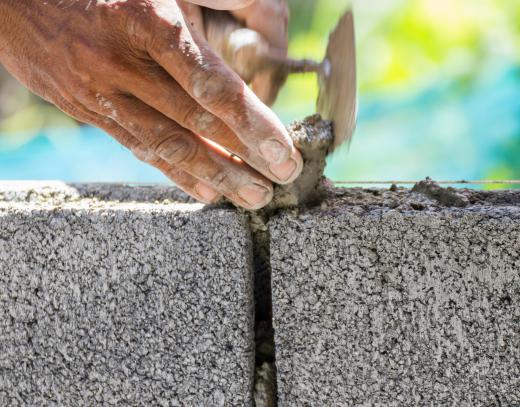Masonry joints are used in building construction to secure bricks or concrete materials into the building structure. Mortar is a paste used to create the masonry joints. This material is usually created from a mix of sand, cement, water, and lime. The mortar is applied wet and hardens as it dries.
In new construction, masonry joints are created by applying mortar to the ends of each brick. The brick is then pushed up against the preceding unit, forming a head joint. This type of joint meets two needs: improves the water resistance and increases the overall security of the structure. In order to provide ideal weather resistance, masonry joints must be completely filled in.

Tuck pointing is the process of removing old mortar, cleaning the joints, and replacing the mortar. To be effective, the new mortar must be tightly packed into the space, creating the same type of weather resistance and structural support as the original joints.
There are four types of masonry joints: concave, V, weathered, and flush joint. All four must be applied using wet mortar, properly prepared. Mortar that is too wet or too dry does not seal properly and will result in an unsatisfactory product. The concave joint is considered the most durable of all masonry joints. A curved steel joining tool is used to push the mortar into the joint, increasing the quality of the seal.

A V joint is made by applying the mortar with a joiner tools that makes it more resistant to water absorption. Weathered mortar joints have a downward and outward slope to the brick below. This adds to the visual appeal of the wall. Flush joints are used in areas with mild weather and create a smooth surface.
Masonry joints are applied by stone masons or bricklayers. This is a skilled trade found in the construction and renovation industry. Training required to become a mason is typically one to two years in length and is usually completed through an apprenticeship program. This is a skill in high demand, with excellent compensation and job opportunities available.
If a joint is not applied properly, there are several risks to the property. Joints created with mortar that was too thin will crumble over time. This allows insects and small animals to easily remove the mortar, which will also erode over time due to the weather. Homeowners should inspect the masonry joints on their home at least once a year, and repair the joints where required.
